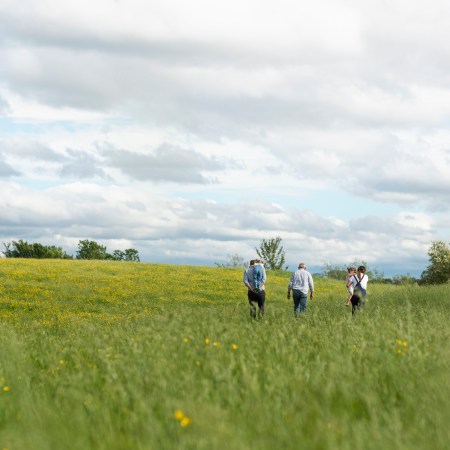Ever wonder why clothes and products for senior citizens are incredibly ugly and boorish? It’s because no one has ever asked older consumers for their input — until recently.
Meet the Longevity Explorers, a test group of men and women ranging from ages 60-90 who have been helping designers design for older people since 2014. It’s all part of Richard Caro’s experiment to improve the way technology is developed for senior citizens — something he wishes more companies and entrepreneurs would start doing.
Especially since many products older people use have effects on their health, as MIT Technology Review reports. “Presented with products that are ‘brown, beige, and boring,’ many older people will forgo convenience for dignity.” Ken Smith, director of the Stanford Center on Longevity, says a huge mistake designers make is assuming that after the age of 60, people care less about design — which can have severe consequences for products that are supposed to help people with their health.
There’s also the perception that older people can’t or don’t want to learn about new technologies. Elizabeth Zelinski, a specialist in neuroscience and cognition, says aging causes changes in the part of the brain associated with new learning, slowing down the process of obtaining information normally. Simply, people just need more time to learn. “A lot of the technology that older people are interested in has to be something that they find easy to use, that’s affordable and compelling,” she says,
But that isn’t always the case, as many older consumers take issue with clunky walkers and ugly canes, along with other unsatisfactory products they’re forced to use. Which is how the Longevity Explorers came about. Caro had finally dealt with a problem that had been bothering him for years — that existing products for older people were “ugly and stigmatizing,” and there seemed to be a missed opportunity there. After interviewing people in their 60s, 70s and 80s, Caro found that many people missed feeling useful.
“There’s this huge demographic of people who have sort of been put aside and told to go off and play bridge and bingo and not contribute to society,” he says.
So he brought people together to talk about aging and help identify problems technologists should work on, and to provide a resource for product developers to understand their companies’ target audiences. During meetings, members will write down topics they want to tackle (like hearing aids), or even bring in products they like for review and discussion. And the idea proved to be successful. There are now eight Longevity Explorer “circles:” five in Northern California and one each in Rhode Island, Pennsylvania, and Ohio, with about 500 members in total.
And while companies as Caro says, are realizing that their assumptions about older adults were “completely wrong,” the groups are also helping their members foster a sense of community, which is, for some explorers, its major draw.
“It’s just nice to know there’s a room full of people who also get stuck,” said one member Lynn Davis, a 71-year-old retired project coordinator. For her, Longevity Explorers isn’t just about helping companies make better products, it’s about receiving advice and commiserating with her peers about the magical process of again along the way.
Editor’s Note: RealClearLife, a news and lifestyle publisher, is now a part of InsideHook. Together, we’ll be covering current events, pop culture, sports, travel, health and the world. Subscribe here for our free daily newsletter.
Thanks for reading InsideHook. Sign up for our daily newsletter and be in the know.


















